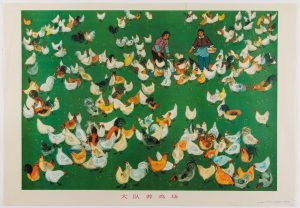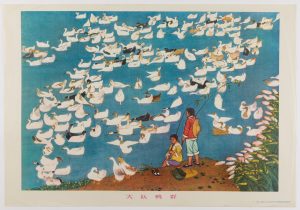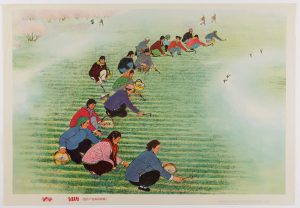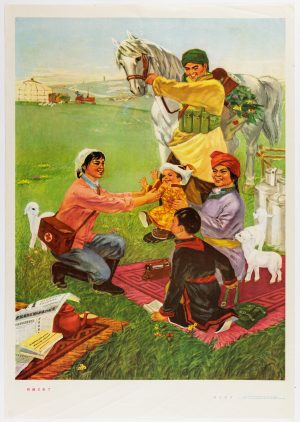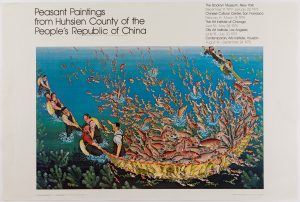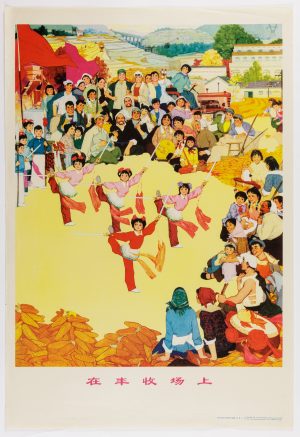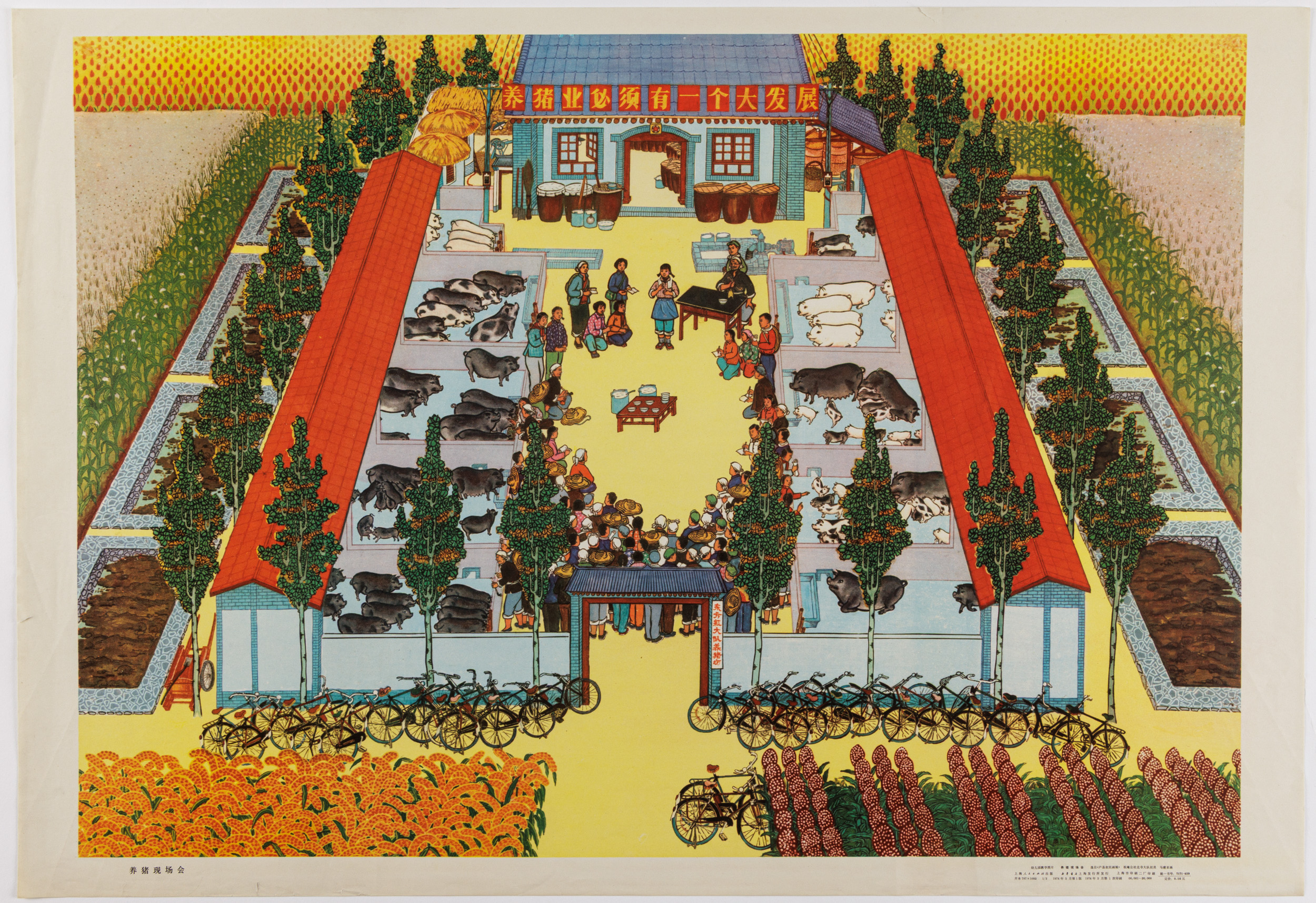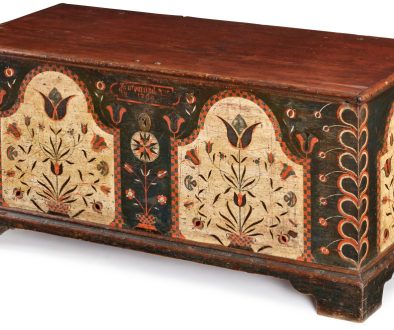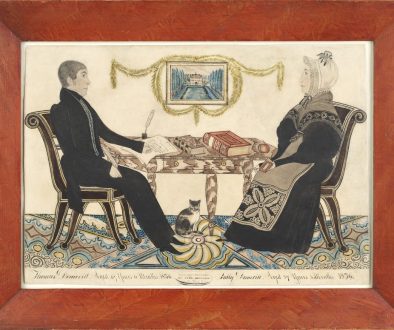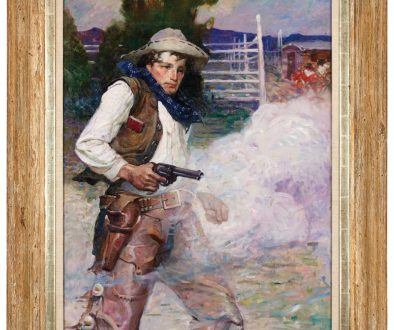Cultural Revolution
Lot 473 is a group of colorful, joyous scenes of rural Chinese farm life in the 1970’s. Created as Maoist propaganda posters, there is more to these works than meets the eye. My particular favorite is On-the-spot meeting of the swine industry, which shows workers gathered in a circle with cups of tea, bordered by animated pigs and piglets. Looking at this tea party, questions arise—such as why is one worker seated behind a big desk, and why are people taking notes?
One aspect of Mao’s Great Leap Forward and the accompanying Down to the Countryside Movement was the purge of intellectuals from institutions and their re-education and re-alignment with the working class through manual labor in rural areas. More than a few workers on this state-run pig farm were probably artists and intellectuals. The tea party is a farm meeting, which was a mandatory and serious event. Mutual criticism and self-criticism were regular features of the meetings, the purpose of which was the enforcement of ideology and social control. Workers were forced to confess their perceived mistakes and missteps, particularly any bourgeois ideas, and were denounced by others. Communist economies are centrally planned and controlled by the State, which determines how many sausages will be produced and who will eat them. The pig farm collective had targets set by the government which might not have reflected reality but were mandatory. The agricultural disruption of the Great Leap Forward created rural food shortages which persisted throughout the 1970s, making sausages scarce.
The artwork of these posters is another product of the Cultural Revolution. They are Huxian Peasant Paintings. Peasants were trained by artists and the CCP to create Party-approved propaganda artworks. The scenes are rich and colorful folk art depictions of good communists and productive workers. The paintings were distributed widely as posters, transmitting ideology to a semi-literate or illiterate rural population. Ironically, some of the pictured farm workers may have been artists who were not inclined to paint the joys of the Maoist purges.
by: Cynthia Beech Lawrence
